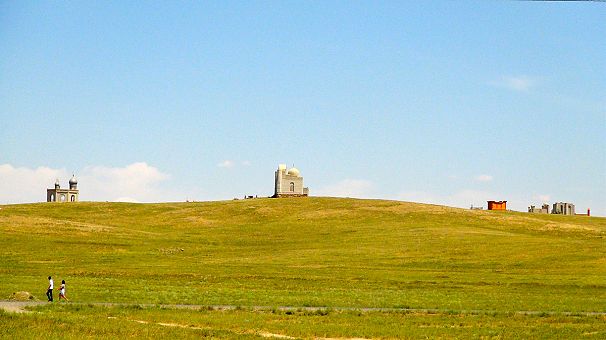The accent is on the past in the ancient silk road city of Taraz in southern Kazakhstan, with a new drive to make sure that historic landmarks can be enjoyed for generations to come.
Meticulous restoration work is bringing numerous local monuments back to their former glory.


The impressive Tekturmas mausoleum is just one example. Located on a hill that overlooks the city, the monument attracts tens of thousands of visitors every year.
Taraz, which is the administrative centre of the Zhambyl region, is one of Kazakhstan’s oldest cities.
It celebrated its 2000th anniversary in 2001, an occasion that was officially recognised by UNESCO.



Given its rich history along the Silk Road, Taraz has also attracted a lot of interest from archaeologists.
Sites where digging has taken place are also earmarked for restoration.


Taraz, which is surrounded by beautiful steppe country, lies beside the Talas River and is close to the border with Kyrgyzstan.


There are numerous sites of interest arond Taraz, but the most popular for many is the elegant Aisha Bibi mausoleum, which dates back to between the 11th and 12th centuries.


Painstaking restoration work that began in 2002 was considered to be a huge success, with the surrounding gardens adding to the overall harmony of the site.


And what makes Aisha Bibi particularly popular is the legend that lies behind its construction. This is a monument dedicated to love.
An ancient ruler built it for a young woman he fell in love with: Aisha Bibi. She was killed by a snake while attempting to go against her parents’ wishes to be with him.

Couples travel from far and wide to visit the monument on their wedding day, hoping to attract the good luck that Aisha Bibi is supposed to radiate.


Many visitors rub their hands down the exquisite terracotta tiles.

An expert is also on hand to explain the significance of the site and to lead people in Muslim prayers.

It is worth taking the time to look at all of the minute detail of the decorative art, which is unique to Aisha Bibi.
There are more than 60 different types of ornaments.



The main mausoleum is 18 metres high, symbolising the age of Aisha Bibi when she died.


Visitors are also encouraged to simply sit in the lush, colourful gardens and listen to the birds and gentle flowing stream.



No comments:
Post a Comment